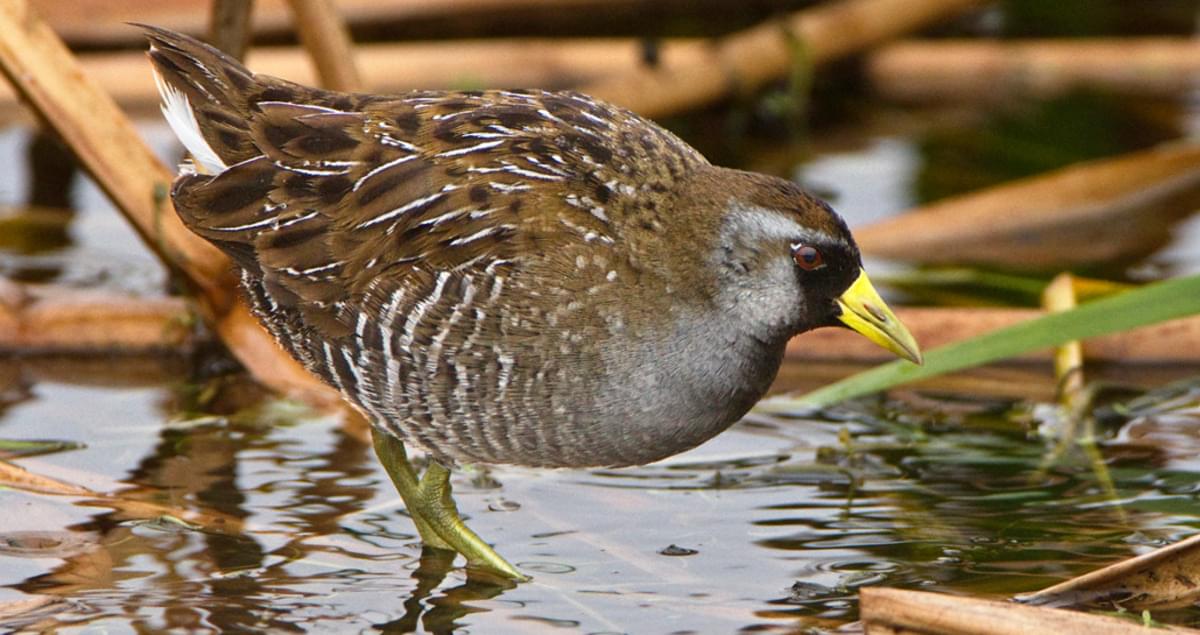Join Greg Kearns in a remarkable opportunity to learn about our Sora rail population and its tight link with the wild rice in the Patuxent River marshlands. Out in a pontoon boat, we may have the opportunity to help band a few individuals, depending on the weather and the amount of rail in our vicinity. Also, we will learn about wild rice as it will just be ending its seasonal bloom. In 1987, Greg began to investigate the secret life of Sora Rails, a small marsh waterbird, found at Jug Bay which led to ground-breaking research and understanding of the bird’s natural history as well as an amazing restoration effort. Greg’s annual banding of the birds showed a marked decline from their peak in 1998 of 1,300 rails to only 100 in 2000. He and USGS biologist Mike Haramis linked the decline of the rails to the vanishing stands of wild rice (95% decline) that they observed during the same period. The study revealed the culprit to be resident Canada geese. This launched a full-scale wild rice restoration combined with a Canada goose management plan.
Today wild rice has recovered at or beyond the acreage existing thirty years ago. Will Sora numbers increase as well? How have other waterfowl been affected? “It’s a very delicate balance,” Greg says “There’s nothing in these wetlands more productive and nutritious than stands of wild rice for seed-eating migrant birds.” Greg will share his stories on nature’s delicate balancing act.
Greg Kearns, a MNCPPC naturalist/biologist for over 37 years at Patuxent River Park in Upper Marlboro Maryland, is an accomplished photographer, birder, and an authority on the Sora Rail (Porzana carolina), Osprey (Pandion haliaetus) and wetland ecology at Jug Bay. He was named Conservationist of the Year by the Maryland Dept. of Natural Resources in 2006 for this work and restoration of the Wild Rice marshes on the river, which has been recognized as one of the best wetland recoveries in Maryland. He also received the Jug Bay Award for significant contributions to the environment on the Patuxent and was given the 2017 National Wetlands Restoration and Conservation award from the Environmental Law Institute in Washington, DC. Jug Bay is a component of Maryland’s Chesapeake Bay National Estuarine Research Reserve System, one of only 29 in the country.
Look at how the sora population is being tracked – https://sites.google.com/view/projectsora/home
Remember to
- Dress according to the weather, layers with non-cotton clothing work best. Gloves and warm hats for cooler temps. For sunny days, a hat with a brim may be needed.
- Wear sturdy closed-toe hiking boots or sneakers with non-slip soles that can safely handle slippery surfaces.
- Bring water, snacks, sunblock, and for your camera- an extra battery, extra memory card, and lens-cleaning cloth
- Bring binoculars, if you have a pair. There will be two pairs to borrow.
- No pets, please.
SPACES ARE LIMITED — The tour should take approximately 3 hours to complete. The exact meeting space will be provided when registration and payment are complete.
Cancellation Policy: NHSM Field Experiences – Cancellations made seven or more days in advance of the field experience will receive a refund (minus a $5 processing fee). Cancellations made within the week of the event will not receive a refund but can be transferred to a friend.


